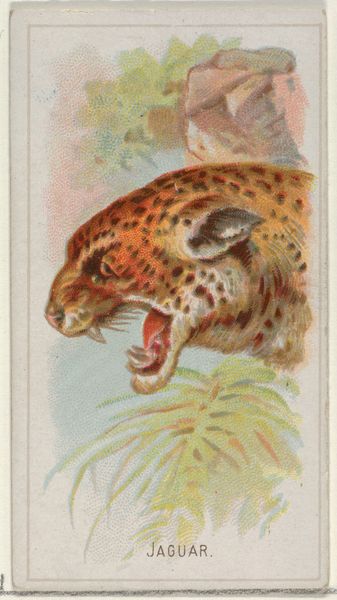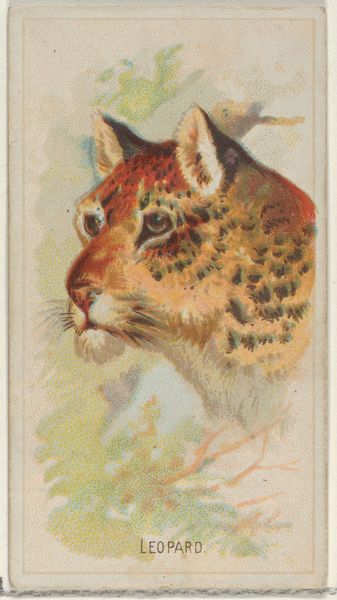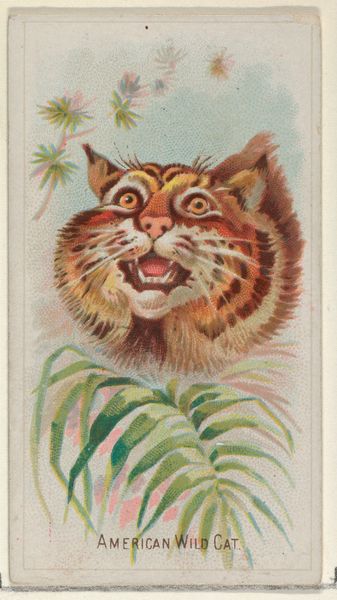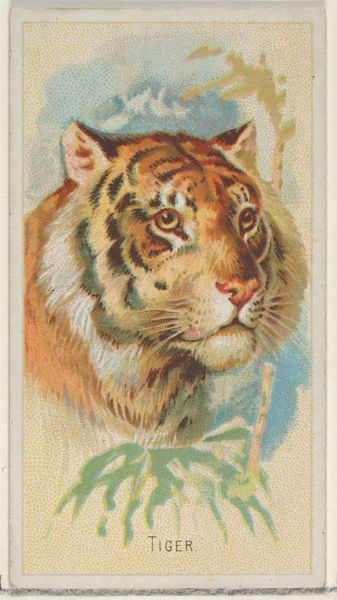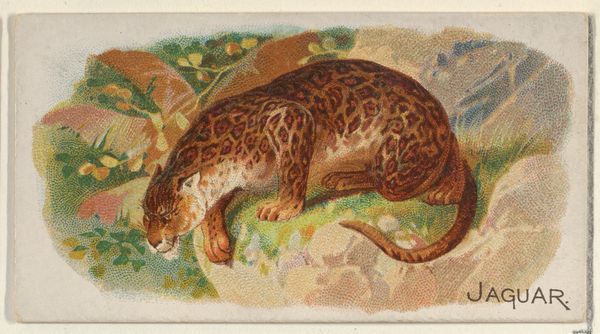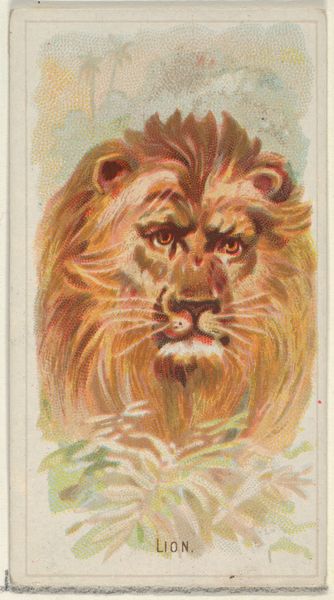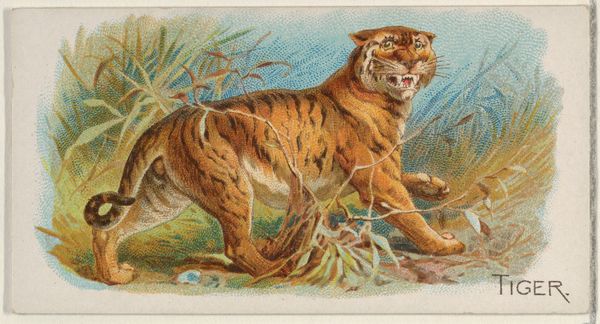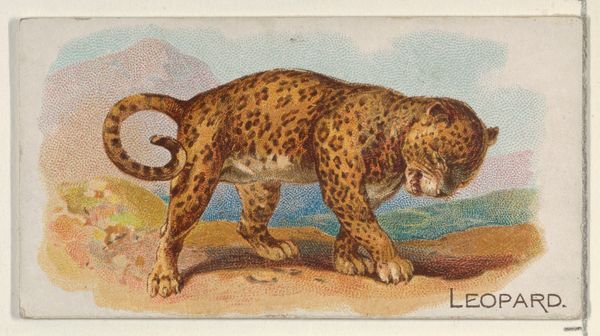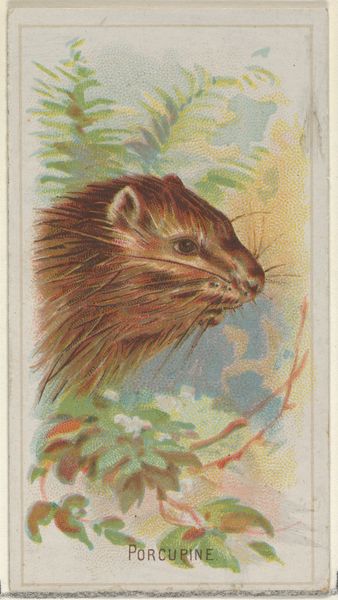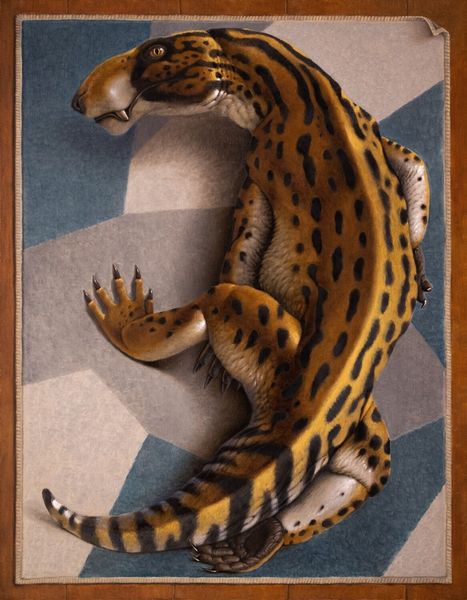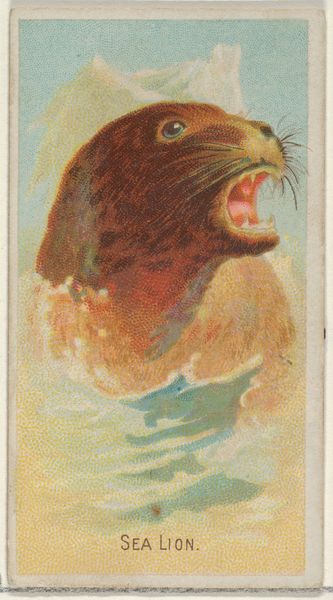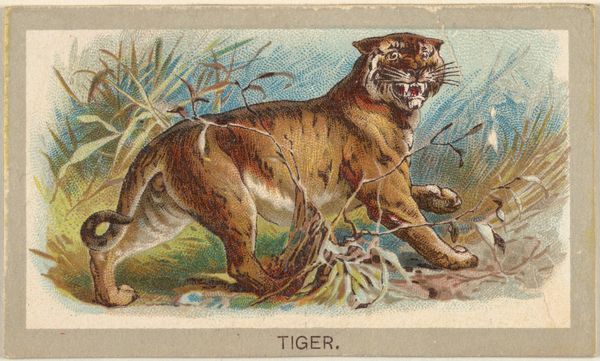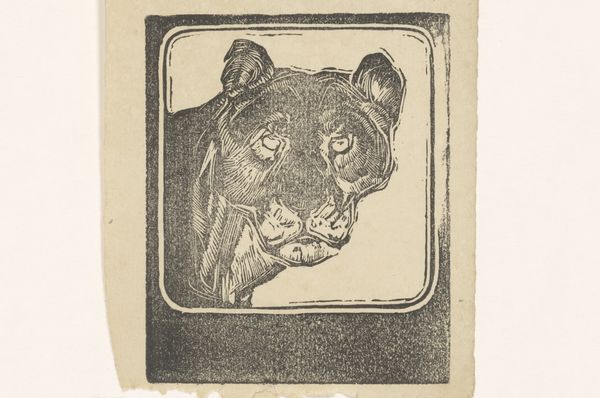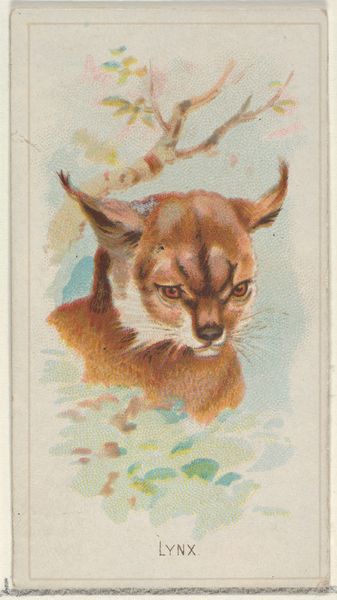
Painted Ocelot, from the Wild Animals of the World series (N25) for Allen & Ginter Cigarettes 1888
0:00
0:00
drawing, coloured-pencil, print, watercolor
#
portrait
#
drawing
#
still-life-photography
#
coloured-pencil
#
animal
# print
#
watercolor
#
coloured pencil
#
watercolour illustration
Dimensions: Sheet: 2 3/4 x 1 1/2 in. (7 x 3.8 cm)
Copyright: Public Domain
Editor: The texture is immediately striking. It looks almost velvety, but slightly artificial, like printed flocking. Curator: Indeed. What we are viewing here is a card from Allen & Ginter’s “Wild Animals of the World” series, circa 1888, entitled "Painted Ocelot." The media involved include colored pencil, watercolor, and likely some form of printmaking. The image, now held at the Metropolitan Museum, reveals much about its era. Editor: What I find intriguing is the context. These were trading cards included with cigarettes, correct? So, the high art techniques of watercolor and colored pencil were employed for mass-produced ephemera. What a strange interplay of value. Curator: Precisely. The chromatic scale is also carefully considered. Note how the browns and tans of the animal are offset by the blues and greens in the surrounding botanical backdrop, all contributing to visual harmony within a confined space. Editor: And the choice of the ocelot itself. Not a fearsome lion or tiger, but a creature prized for its pelt, destined to become a fashionable accessory. It is commodification depicted literally! Curator: We can also see how its presentation fits neatly into semiotic conventions prevalent at the time. The tight cropping and frontal pose evoke traditional portraiture, conferring a kind of dignified status onto the animal, however ironic. Editor: It makes you ponder the lives of the artists employed. What were their thoughts knowing that their detailed art would so fleetingly be valued before being discarded with the packaging of smoking? Were they even aware? Curator: Well, that interplay of aesthetics and historical purpose undeniably deepens our appreciation of this small print. Editor: I concur. Considering both the beauty and its place in the production cycle of its time truly changes the work, its texture and weight within history.
Comments
No comments
Be the first to comment and join the conversation on the ultimate creative platform.
